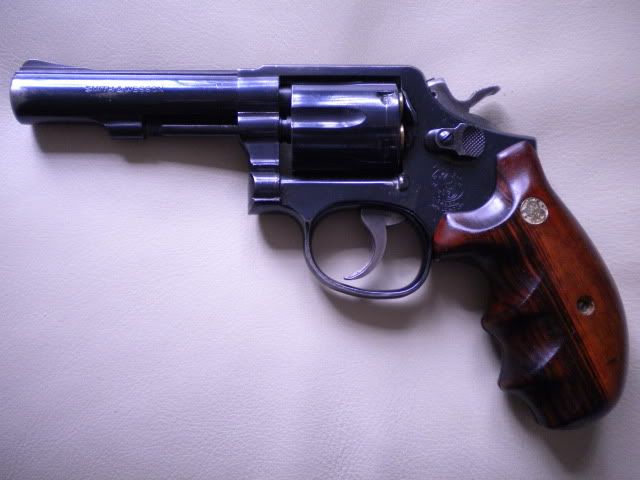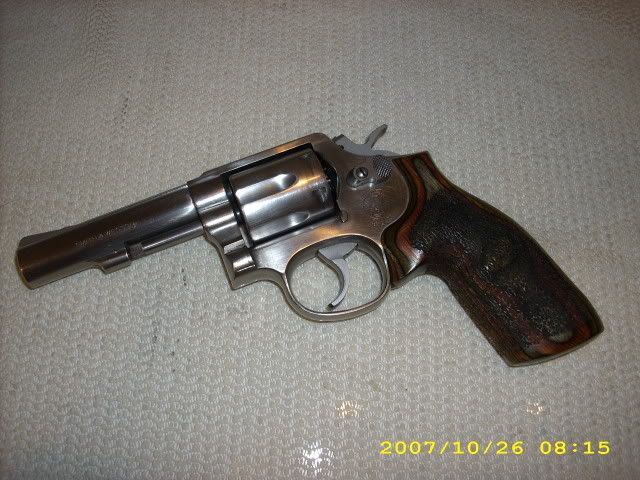A lot of people make statements about heat treating but no one knows for sure what the standards are. It just makes good internet talk.
All the more reason to advise against such a conversion. Setting off a 35,000psi small explosion inches from your hand with a gun that may or may not have adequate heat treating doesn't sound wise to me.
The frames are the same between the modern K frame 38 and K frame 357 models. (A modern frame is considered one that is marked with a model or model and dash number). The major difference is the size of the cylinder and how far back into the frame the barrel is fit. The model 15/10 barrel sticks back farther in towards the cylinder face than the model 19. The fitting of 357 mag cylinders requires the removal of the barrel, yoke assembly, new hand, stop bolt and some other pieces parts. This modification has been done a lot in the past without devastating results. The most notable being Jim Cirillo's Model 10 that he used on the NYPD Stake Out squad. He had a bull barrel put on his Model 10 and a 357 cylinder added at the same time. (He did love to tinker with his guns - see his Smith and Dan conversions).
The problem is that not all K-Frames are created equal. We know for a fact that older K-Frames were not as strong as later ones. For example, the .38-44 cartridge was deemed to be suitable only for N-Frames and far too much for the .38 M&P, yet several years later S&W was making the Combat Magnum in .357 Magnum which is far more abusive to a gun that the .38-44. Likewise, S&W specifically says that pre-1958 K-Frames should not be used with .38 Special +P ammunition, even though they were building Combat Magnums before that date, which also points to the fact that not all K-Frames are equal in strength.
Now, while the OP's gun is obviously new enough to be suitable for +P ammo and was produced concurrently with .357 Magnum K-Frames (we know this because it has a model number), we have no way of knowing when in the nearly 60 year timespan it was produced (the OP has provided neither a serial number nor dash number), nor how it was heat-treated even if we did know the vintage (S&W is rather tight-lipped on the matter). As such, we have no way of knowing whether or not said revolver would be able to withstand a .357 Magnum conversion or not. While the use of a proper cylinder
might prevent a catastrophic failure, frame stretching and excessive flame-cutting of the topstrap are still very real possibilities.
The only way to know definitively would be to call S&W and, after providing the serial number, model number, and dash number of the revolver in question, ask their opinion on the matter. I very much suspect that S&W will not give the OK for such a conversion, however, and with so much unknown information we cannot reccommend such a conversion as safe.


